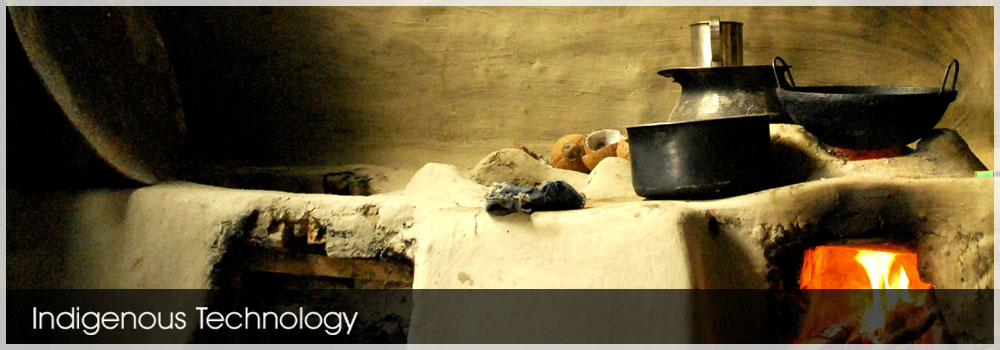Traditional and indigenous knowledge systems : Implications for sustainability of local communities in emerging economies
Indigenous and Traditional knowledge (IK &TK) is an inextricable part of our global legacy, an invaluable resource that ensures a just allocation and balance of natural capital and social assets. It is local knowledge – knowledge that is unique to a given culture or society and forms the basis for local-level decision making in agriculture, health care, food preparation, education, natural-resource management, disaster management and a host of other activities in rural communities. Given its foundational proximity to localism and limited impact, this form of knowledge appears informal, and small scale. However the most significant contribution that IK makes, is to ensure that a holistic planetary balance maybe maintained through connections of local global exchange of values.
This simply means that when limits are posed at local level through a paradigm of responsible resource utilization, equity, environmental sustainability, we may be able to ward off the combined impact of unsustainable practices at a global scale. Given its experiential nature, augmentation and enhancement of IK and TK with capacity building through modern tools and strategies of mainstream technology, business, scientific temperament and critical thinking can help evolve a powerful system for local development and welfare state emphasizing adaptability, inclusion, innovation. Particularly for emerging economies at a time when emulating choices made by developed economies is no more sustainable, options of ‘leap frogging’ are being propounded as a path for new age growth. It is now increasingly believed that areas of the world that have a poor economic base can move forward without going through the intermediary steps of developed technologies and devise its own locally adaptable tools, models and ideas to build their society. A number of these formalized locally adaptable technologies for energy, health care, disaster management, agriculture have their foundations in informal knowledge systems that are inherited legacies of local communities.
Indigenous communities in rural periphery have assets, resources and capital that need nurturing by enhancing the local know-how with stepped up research and outside technical advice, in order to increase their efficiency and effectiveness so that it can provide solutions that are immediate, sustainable and inclusive say for example to increase land’s productivity, address health condition, disaster management a and sustain critical ecosystem. People in such communities have indigenous knowledge that has guided them to conserve scarce natural resources and survive in hostile environments by getting the incentives and keeping the balance right.
Not only in farming techniques, but in other spheres of human endeavours and institutionalized community support structures like economy, health and risk management, flood and disaster control too we find significant contributions of indigenous communities and their embedded traditional knowledge systems. For example The Thengal-Kacharis, belonging to the Boro-Kachari ethnic groups are one of the most ancient inhabitants of Assam with rich tradition and cultural history. The bari or homestead gardening has had great significance from the point of conservation, consumption and management of biodiversity. Bari’s connote an operational unit in which a number of crops including trees are grown with livestock, poultry and/ fish production for the purposes of meeting the basic requirements of the rural household.Women of this community have played a key role in sustainable use of bari bioresources through various practices and knowledge systems that have been passed from generation to generation. The crop diversity and their arrangement in a Thengal Kachari’s bari, traditional practices followed in sustainable management of bari- bio resources form a significant basis of sustainable indigenous knowledge embedded in the social organization for livelihood support and management and povery allievation for rural development. [1]
With more than 40 per cent of its surface area susceptible to flood damage, Assam, most of the Brahmaputra valley districts, faces serious floods almost every year. The Brahmaputra valley experienced major floods in 1954, 1962, 1966, 1972, 1974, 1978, 1983, 1986, 1988, 1996, 1998, 2000 and 2004 and subsequently too. The worst affected districts are Dhemaji, Lakhimpur, Jorhat, Tinsukia, Dibrugarh, Sonitpur, Morigaon, Dhubri and Barpeta. The Assam State Disaster Management Authority (ASDMA) has attempted to take up projects to document the traditional “coping practices” of floods used by indigenous communities and help other communities living in flood-prone areas to adopt them.The traditional practices used by some communities have used their indigenous knowledge in designing their houses and safeguarding their collective resources and property . Communities like the Misings [2]construct chang ghar(houses on stilts) and almost every rural household owns a country boat for use to reduce risks during floods. Modern Disaster management techniques uses the early warning and shelter facilities to reduce damage during floods, but if people are trained from beforehand to change their style of living, they can use those practices and reduce risks.
Documentation of these knowledge systems is thus invaluable to create a strategic awareness programmes and explore the scope of their use by others. The onslaught of neo liberalism and its supporting political agenda has completely eroded the paradigm of sustainable living embedded in the traditionally dominant world view of the indigenous communities. A comprehensive documentation and creation of a data base of the invaluable indigenous knowledge system in areas of natural resource management practices, community participation, ecological wisdom, land-use-patterns, modes of community disaster management, forest cover and its use etc could contribute immensely to the creation of a framework for sustainable liberalism that seeks to integrate and enhance this informal knowledge with systematic application of scientific rationality and modernizing techniques for environmental impact assessment, and cumulative impact of development interventions based on sensitization of natural capital and ecosystem services and its impending risks both financial and environmental for any unplanned tradeoff’s and externalizing costs; social inclusion and community participation; individual freedom and human rights.
1.Journal of Traditional Knowledge Vol.8(1) January 2009,pp 35-40
[2] Misings are the second largest tribe who mostly live in the flood-prone districts of Lakhimpur, Dibrugarh, Sivasagar, Jorhat and Sonitpur












